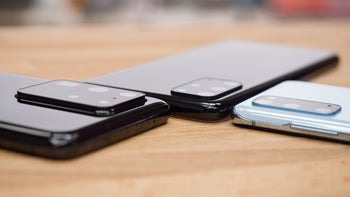An app turns your Galaxy S20 Ultra or Note 10 Plus into night vision goggles

Last year, Samsung introduced a top-shelf Galaxy S10 5G model that subsequently came to US shores as well, and had something brand new for the Galaxy S line. Besides the crazy for its time 12GB RAM/1TB storage version, the third unique feature of that particular S10 variant was said to be a unique for the series quad-camera set on the back.
What piqued our interest at the time, however, was the mysterious "better spatial perception" blurb that Samsung used while explaining what the four rear cameras will bring to the 5G model representative of the venerable S10 line.

Samsung, it turns out, has been developing time-of-flight (ToF) depth camera sensors to go into its smartphones for a while. The tech is different than the 3D structured light face-reading kits on the front of phones like the iPhone 11 series in that it can map a whole room full of objects for you.
The TrueDepth camera setup on the iPhones uses 30,000 points to develop your 3D face matrix, while the ToF cameras use a sensor and auxiliary light kit that can detect and map up to 300,000 points at a distance of about ten feet, bringing about more opportunities in 3D space sensing.
In theory, ToF sensors could allow you to change digital clothes, play augmented reality games, and gesture like a madman while you serve Kinect-style tennis backhands against your roomies. In reality, they are mostly helping the other cameras in the kit on the back of the phone achieve better depth and spacial perception for shots like portraits where separating the subject from the background blur correctly is important.
Turn your Galaxy S20+ or Ultra and Note 10+ into night vision devices
Time-of-flight kits, however, can be used for one more thing - fun - and that's exactly what the Night Vision app that lets you use the ToF camera for scanning of your dark room and outputting an admittedly low-res "heat map" of anything around. Yes, in darkness, that's why the subtitle of the app is ToF Viewer.
The pure unadulterated output from accessing the depth camera on the back of the phones equipped with ToF sensors, results in something of this nature below. Cool, eh, at least until ToF sensors get one-upped in mapping detail and distance by LiDAR cameras like the one on the new iPad Pro that will eventually trickle down to the iPhone 12 Pro models.











Things that are NOT allowed: